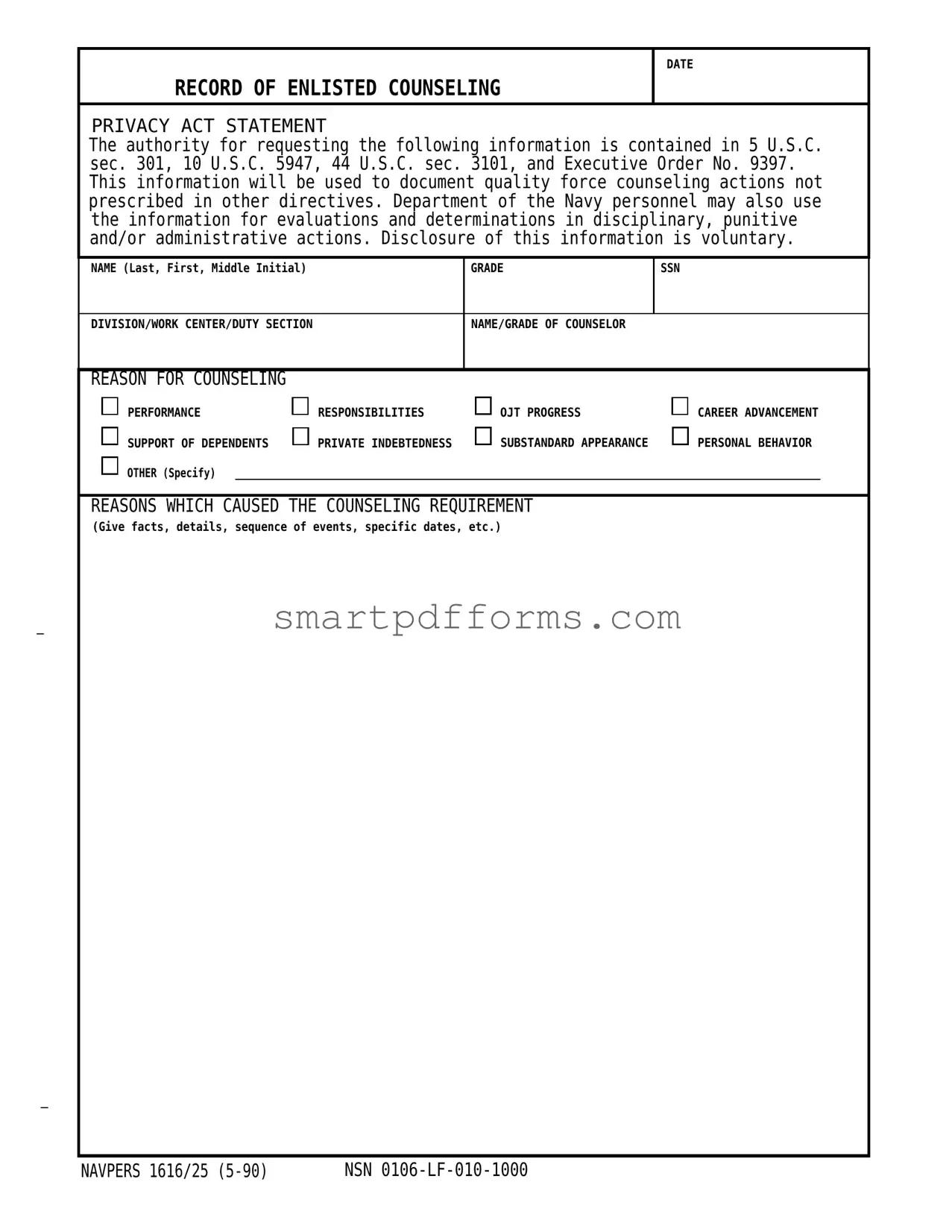Blank Navpers 1616 25 PDF Template
The NAVPERS 1616/25 form, also known as the Record of Enlisted Counseling, is a crucial document used within the Department of the Navy. It serves as a formal record for documenting quality force counseling actions that are not covered in other directives, utilizing information gathered under various U.S. codes and an Executive Order. This form plays a significant role in evaluations, disciplinary actions, and other administrative decisions, helping to outline plans for continued performance improvement or problem resolution. Click the button below to start filling out your form.
Make This Document Now


